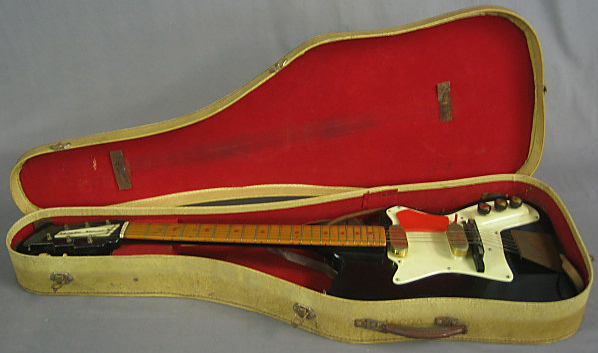THE GUITARS OF JAMES ORMSTON BURNS
REFERENCE & RESOURCE PAGES:
SUPERSOUND (1958) - BURNS-WEILL (1959) - FENTON WEILL (1960-65)
ORMSTON BURNS (1960-1965) - AMPEG (1963-64) - BALDWIN (1965-69)
SHERGOLD WOODCRAFTS (1967-69) - ORMSTON (1968) - HAYMAN (1970-75)
BURNS UK (1973-77) - BURNS ACTUALIZERS (1979-82) - SHERGOLD (1975-92)
BURNS-WEILL
OVERVIEW - FIRST EFFORTS - FENTON - RP1G/B - RP2G/B
The RP2G 'Roy Plummer' model, 'Streamline Deluxe'
Note blanked out pickup covers








Another RP2G in original case, auctioned 2010.
Note solid-topped pickups and Hofner bridge, plus extra screw in pickguard behind the bridge.
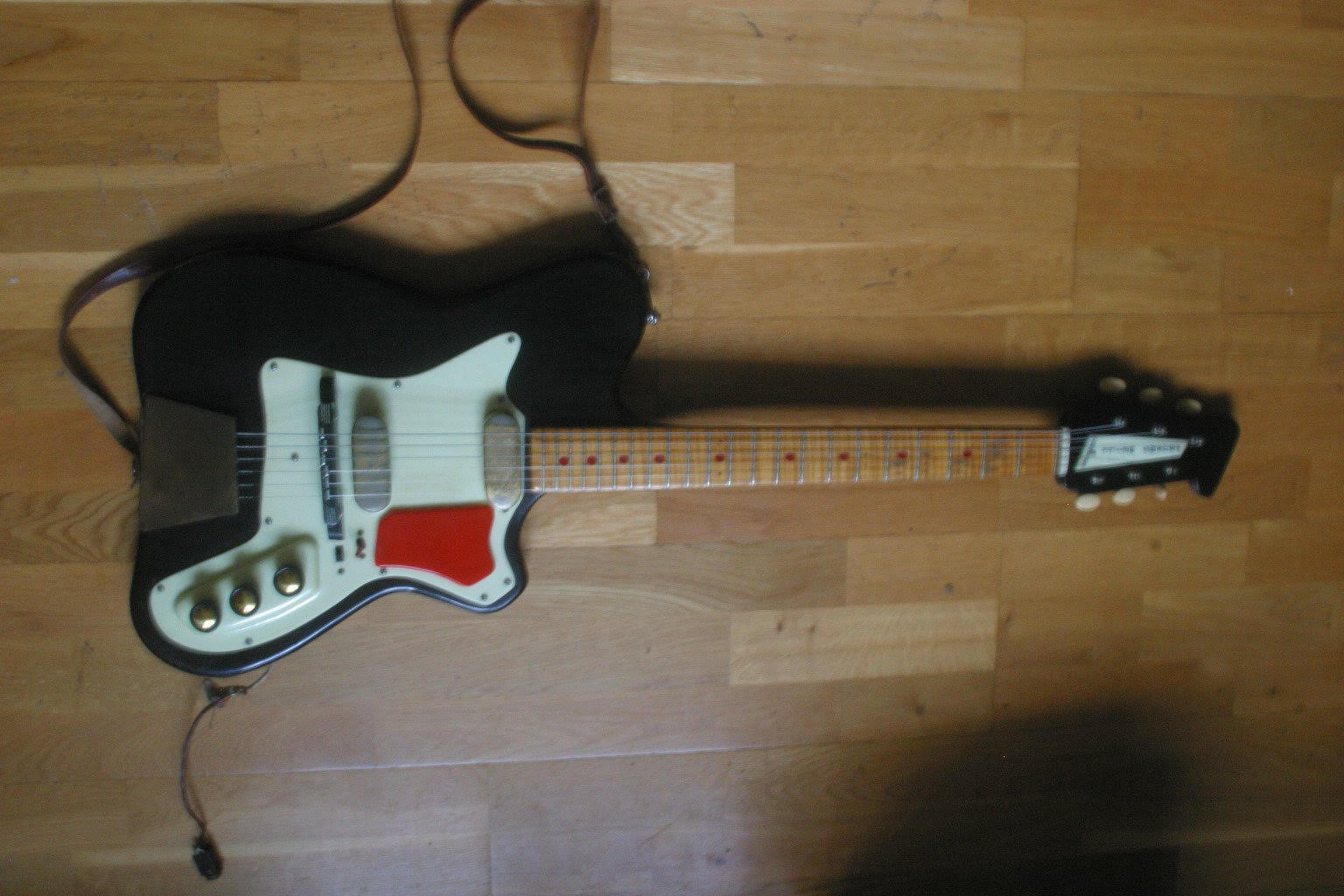
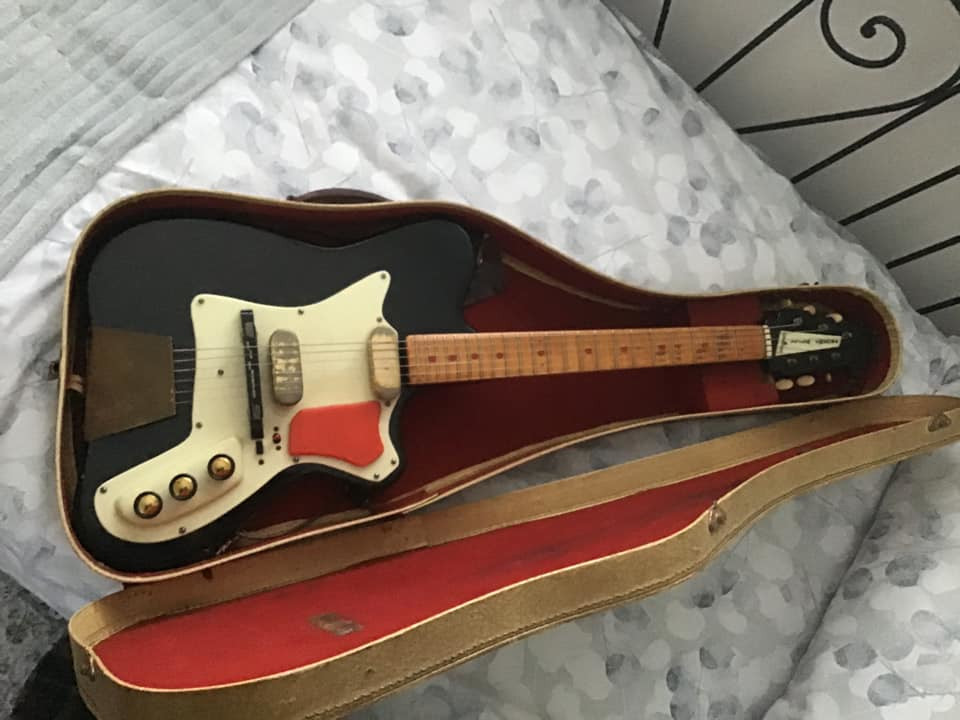
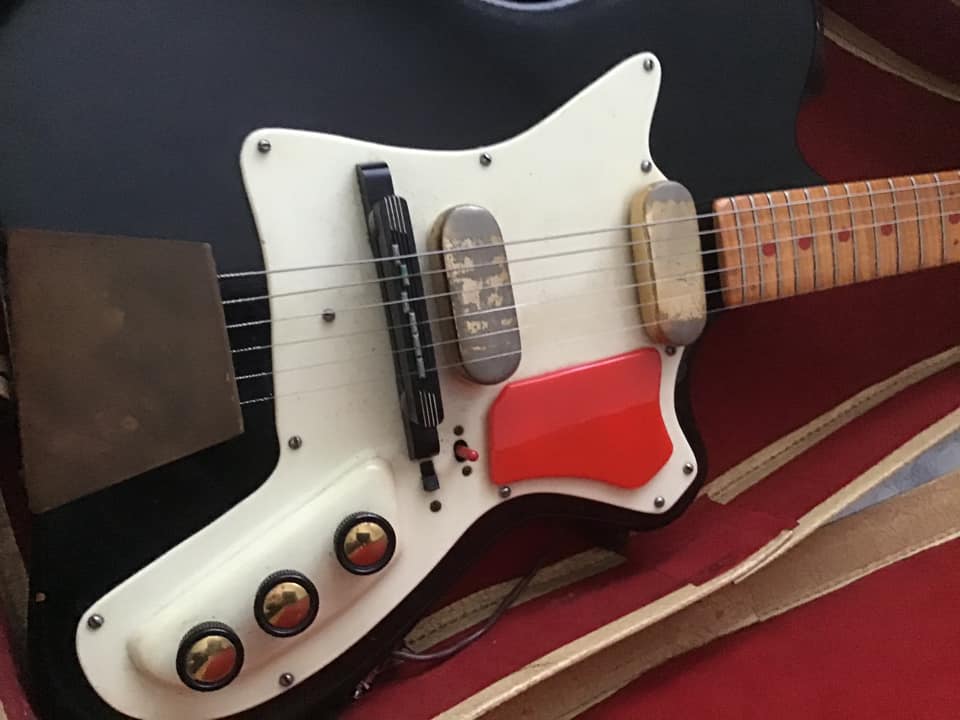
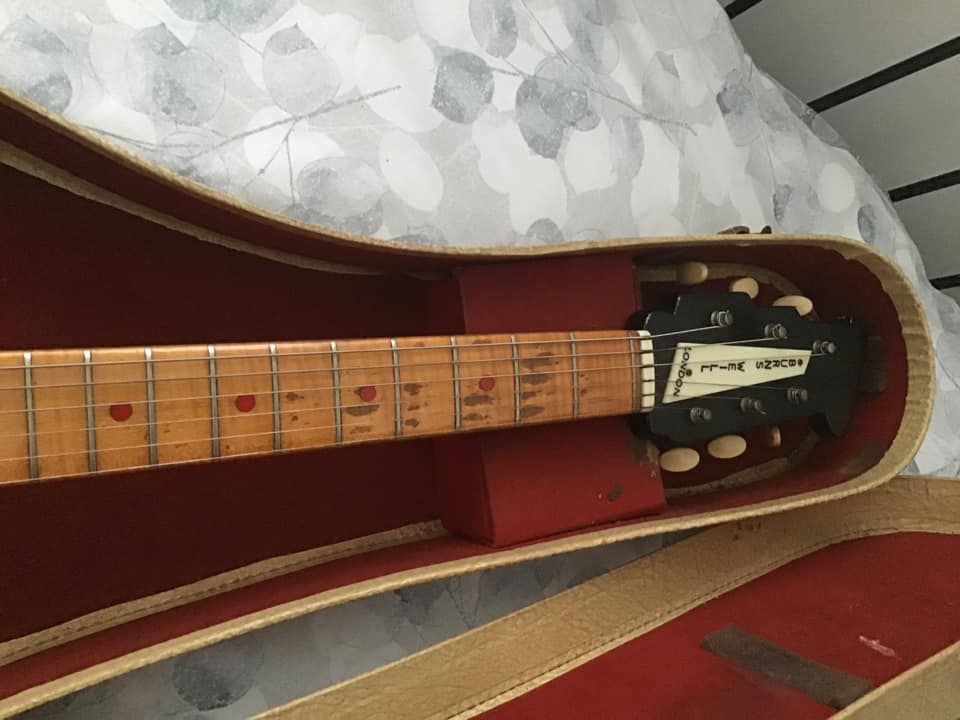
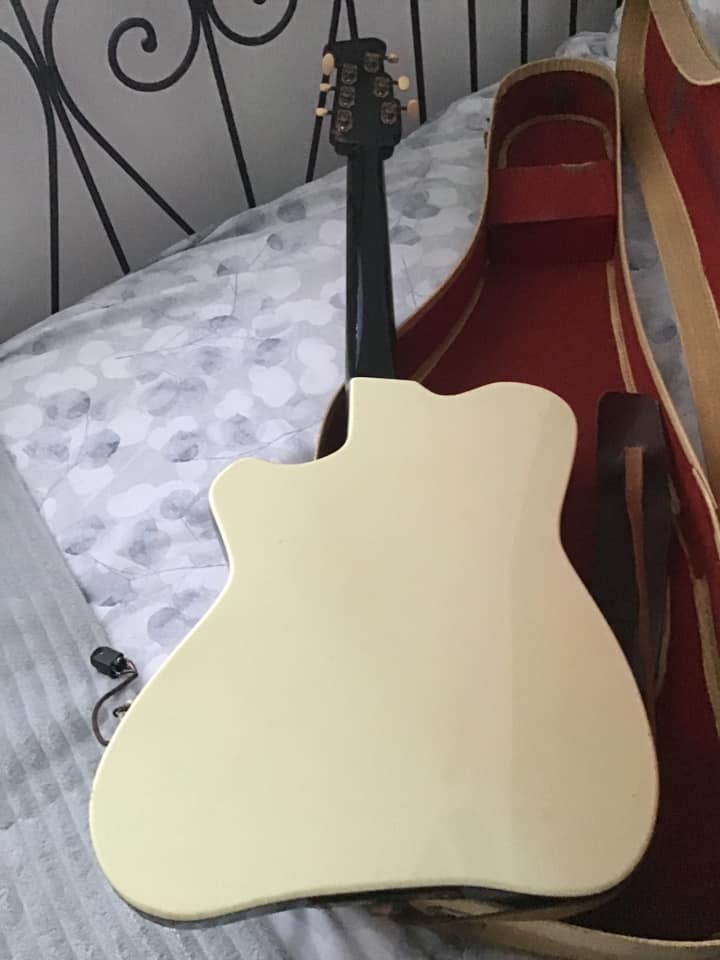
Another RP2G with solid-topped pickups
Note 2 out of 3 changed knobs













An RP2G 'Roy Plummer' 'Streamline De Luxe', with added Bigsby Vibrato unit
Note Pickup covers with 6 holes














Burns Weill RP2G with stripped finish, and replaced knobs:










Rory Gallagher's RP2G
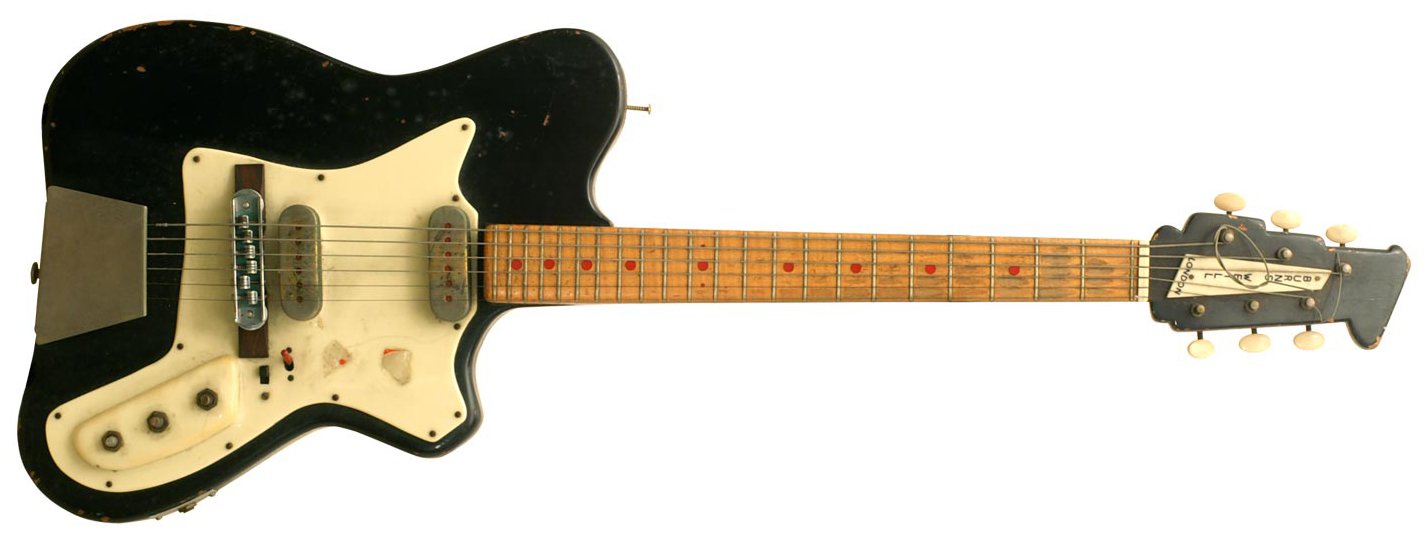
Note open polepiece-hole pickup covers, non-original bridge plus absent knobs and secondary pickguard.
Ade Turner: "Mine's exactly the same as Rory Gallagher's - Only the pickups are slightly different (like the Atlas units with the solid black stripe down the middle). It actually had an early type punched label on the back (common on many early Weill's) marked RP1G. I also have a similar era Bass marked with RP1B with the same type label and have seen loads more with them on - or a witness mark where the label had been.
Don't get fooled into thinking there were quantities of these made. Jim Burns didn't have the best memory - and it was in his nature to "Big things up a bit". Also, in those days adverts were often placed in mags etc... to pre-empt sales rather than sell existing stock. ie: to gauge the interest and see if an item caught on or not. Electric solids were very scarce - so a customer could fairly easily be fobbed off for a bit while things were finished off. This is why the models varied quite a bit - as parts moved around to meet supply/demand.
To my knowledge only 3 of these guitars have ever surfaced - the one I have, Rory Gallagher's and there was also one which surfaced in the Newcastle area many years ago - but this one seems to have dropped off the radar. So, it might have been lost - or it may be the one that I have?
It is a myth that it was routed out from the back - It was most definitely routed from the top. The red flick switch was quite a deep affair though, and the small amount of deep routing under the switch, only left a couple of millimetres of wood behind it - so maybe, they thought the plastic would add a bit more substance to the back - just in case. It does make it quite heavy though. Burns also tended to "glue and screw" his neck joints - so the plastic may also be covering 4 screw heads by the neck joint - who knows? On later guitars, the screw heads were hidden under the fingerboard.
The RP1G or Superstreamline - whatever it is/was called - is actually quite a comfortable/useable guitar and balances nicely with easy reach etc... It was only the woodworking/build quality that lets it down really, and the fretwork/material was a joke - definitely hand made and largely un-playable - but this is understandable at this early stage. It is something that I hope to re-issue at some time with an authentic build - but with a better fingerboard and adjustable bridge etc.... I'll get around to it one of these days. -
Ade Turner
Pictured above, clockwise form top left:
Dallas Tuxedo, Burns-Weill RP2G (rear), Fenton-Weill Deluxe
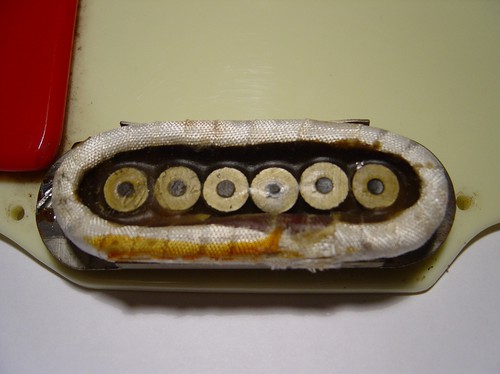
Internal view of an RP2G's neck pickup
Rocco's RP2G:








A Refinished RP2B Bass
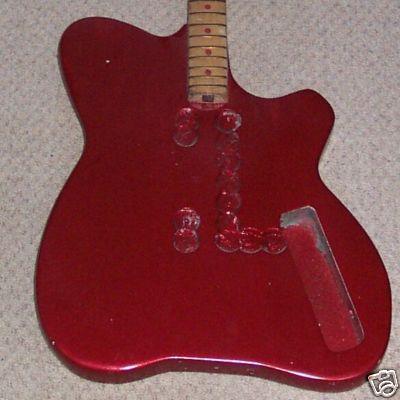
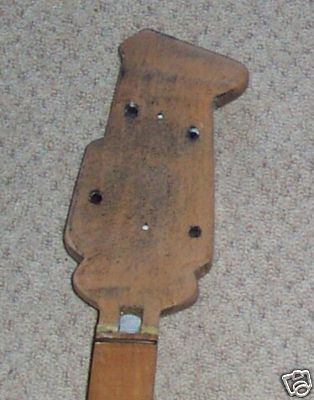
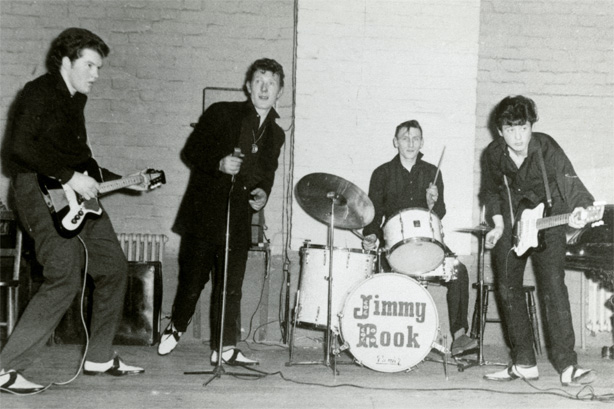
Bobby Oats playing an RP2G in Red E Lewis and the Red Caps c.1960
The other guitarist is Jimmy Page, on a Grazioso Futurama

